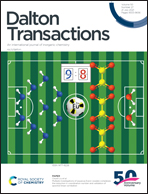Rice-like and rose-like zinc silicates anchored on amorphous carbon derived from natural reed leaves for high-performance supercapacitors†
Abstract
3D N, S, P-doped rice-like C-Zn4Si2O7(OH)2·H2O (C-ZnSi-N2) and rose-like C-Zn2SiO4 (C-ZnSi-CO2) are derived from reed leaves and used for application in supercapacitors. The as-prepared C-ZnSi architectures with a large number of hierarchical pores and high specific surface area from reed leaves have outstanding electrochemical performance. The obtained C-ZnSi-N2 shows 341 F g−1 at the current density of 0.5 A g−1, while the C-ZnSi-CO2 exhibits 498 F g−1, and both of the C-ZnSi materials significantly retain above 99% of their capacitance after 10 000 cycles. Furthermore, the flexible solid-state asymmetric supercapacitors (ASCs) synthesized from C-ZnSi and activated carbon (denoted as C-ZnSi-N2//AC and C-ZnSi-CO2//AC) achieve a high capacitance (405 and 194 mF cm−2 at the current density of 2 mA cm−2, respectively). Besides, the ASC devices show good cycling stability for 7300 cycles with 73% and 77% capacitance retention. The results presented in this study indicate that the N, S, P-doped C-ZnSi architectures from natural reed leaves are promising and efficient materials for manufacturing high performance supercapacitors.



 Please wait while we load your content...
Please wait while we load your content...